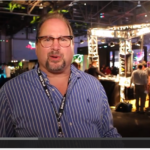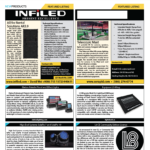Letting Lighting Designers Use Lasers as Luminaires
As lighting designers, when we choose fixtures for the rig, we make our choices based on how much bang can be had for the buck spent. Unless you have an unlimited pile of production funds, this is the reality on the ground in our industry. How many useful features (and “useful” is paramount) can you pack into a luminaire while also making it cost-effective? How about making it strong enough to delay its entropy and withstand the beating that touring equipment takes on a daily basis? All of that is critical, plus it needs to have a bright light source with a weight low enough that it doesn’t make the fixture too heavy to employ. Welcome to the plight of lighting manufacturing in the entertainment Industry.
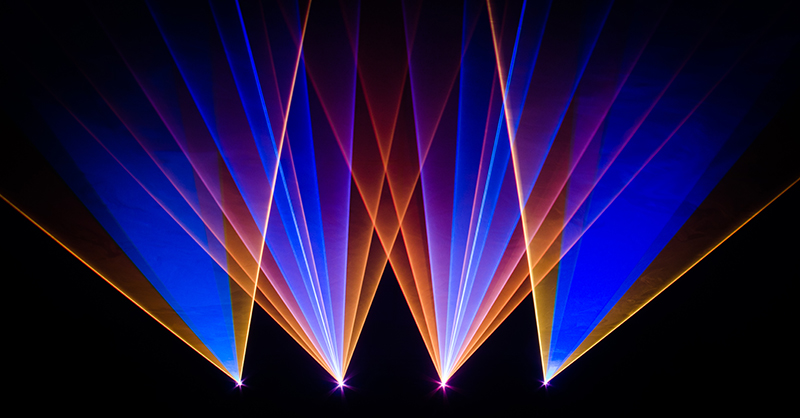
In the last 24 months, there has been considerably more regular integration of laser luminaires in entertainment lighting. Many factors play into this renewed usage, but a major aspect of this change comes from a few very involved players in the industry getting out there and building a bridge between the LDs and the lasers themselves.
Less than a handful of major player laser companies exist out there for our industry because that field is, pound for pound, one of the most difficult in which to stay alive. The companies that service our industry with laser products can do so because they have figured out how to continue to be appealing to lighting designers and production designers as the lighting industry grows up, in whichever fashion they are able to perform that magic. X-Laser is one of those companies, and they’re helping LDs understand something important: lasers are lighting fixtures.
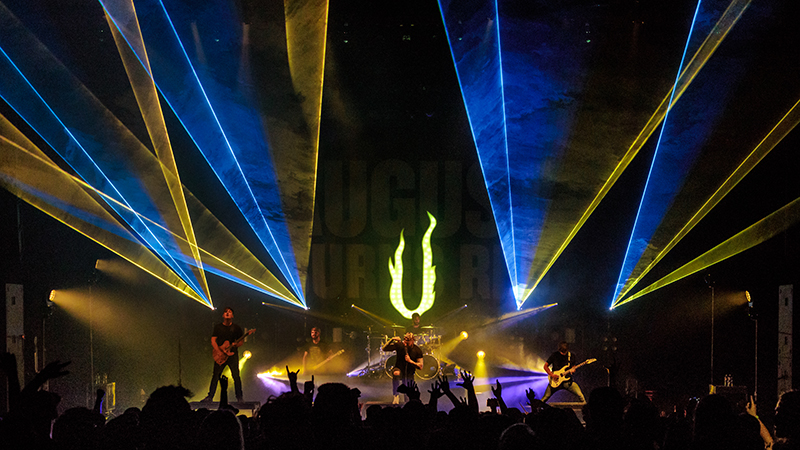
David Summers, a lighting designer/programmer based in Colorado Springs, CO, attended training at X-Laser a few months ago, and said this about his experience learning from Adam Raugh and his team: “When I came here to start this training, my stress level was at the roof because lasers are not something you are in complete understanding of once you start thinking about them. Learning everything that needs to be in your head about lasers ended up being a very confidence-boosting. Not only are they as easy as any moving head to install and program, but once you understand that all of the other seemingly death-critical information like variances, I spent the rest of the time asking myself, ‘Wow, I can do that with this little now unintimidating laser in a box?’” With Raugh’s theatrical and engineering backgrounds, proselytizing lasers to lighting designers makes complete sense.
We have reached a special technological epoch in our industry. Lasers have survived the lighting industry long enough to see a time where non-laser fixtures are bright enough to maintain a synchronicity with their laser counterparts — LED products, from video tiles to washers, have become so visually striking and bright that laser products can be employed with, and actually mix with those products in the rig. Lasers are still going to be the more striking look in the air simply because laser beams will overpower a beam of light seven days a week. But instead of PAR 64s and 750W tungsten halogen lamps providing soft competition to a production quality laser, lasers are up against a litany of legitimate players: Robe MegaPointes, Claypaky’s Sharpy Plus and Vari-Lite’s VL10, among others. The playing field has become more lumen-competitive and at a higher visual intensity, and this helps the laser industry.
Ostensibly, the rest of the lighting rig has gotten bright enough that lasers can be employed and used equally, without just being expensive eye candy. The challenge to true fixture equity with lasers becomes making the laser luminaire interface as similar to all other lighting fixtures, so that it’s literally the same to program.
X-Laser president Adam Raugh and his team of creators have taken on that challenge head-to-head; the results of their efforts have helped the designer segment of lighting see less mystery and have more trust in interacting with laser fixtures in their rigs. Lighting designers and production houses from small to A-Market are realizing that the more you relate a laser package to the rest of the lighting gear in the plot, the more likely people are to employ it.
Lasers have a bit more safety and governmental regulation than typical lighting fixtures. Did you know that lasers are still governed by the Food and Drug Administration? Most laser applications appear in medical applications (among other non-entertainment uses), and to use them, you have to obtain a license called a Variance — X-Laser offers an easy path to getting that license, and they make it as easy as talking to the company.

The Skywriter Series
Outside of being successful in speaking single file line photons to LDs, Raugh and X-Laser also have, among their other excellent product offerings, a winning series of laser luminaires they call the Skywriter Series. X-Laser’s own interface, the Mercury interface, helps tremendously in spreading the word about lasers for lighting designers. Back in the day, on average, when you employed lasers on a show, you got whatever the hire company brought. Whatever effects they wrote, and wherever they wanted them placed in a song was how you could expect the laser show to go, on average. The Mercury interface is the brain of the laser and interconnects you, the laser, and your console, allowing LDs to send commands directly to the laser just like any light fixture. Skywriter lasers from X-Laser, for example, have tons of features and parameters, but just like a moving head with several parameters, the fixture’s interface allows you to program the fixture from your console. The Mercury interface is just X-Laser’s fixture, brain, per se. It also helps with some of the more detail-oriented control aspects, like safety. You still just send DMX to the laser, the Mercury interface deals with it.
The Skywriter series lasers, in what they call their Black Label product line, comes in 5W, 10W, and 20W models. This series of laser products, in addition to being ready for a console out of the box, is also built rugged to withstand the rigors of the road, light enough to not be a hindrance, and consumes so little power that you can chain several together for an even easier, “normal” lighting experience. I personally think being able to show LDs that these laser fixtures can be no more difficult than the simplest fixtures in the rig is paramount to success.
As a side note, X-Laser says its Black Label products are “built to be brighter, stronger and more feature-rich for mobile production pros, larger clubs, lighting rental houses and anyone looking to make an impact in spaces from large ballrooms to arenas.” They also have White Label, which is entry level with killer intensity, Yellow Label for custom industrial applications, and Red Label products, which are for custom unique applications of all sorts.
X-Laser’s success also comes from Raugh’s understanding of a competitive but collaborative marketplace. When you listen to lighting designers and professionals out in the field, you learn what the field wants by understanding how they think, and obviously the lighting industry is by definition full of independent thinkers. Not everyone uses the same laser control, for example — there are several systems out there, some considerably better and more detailed than others, and it comes down to personal preference.
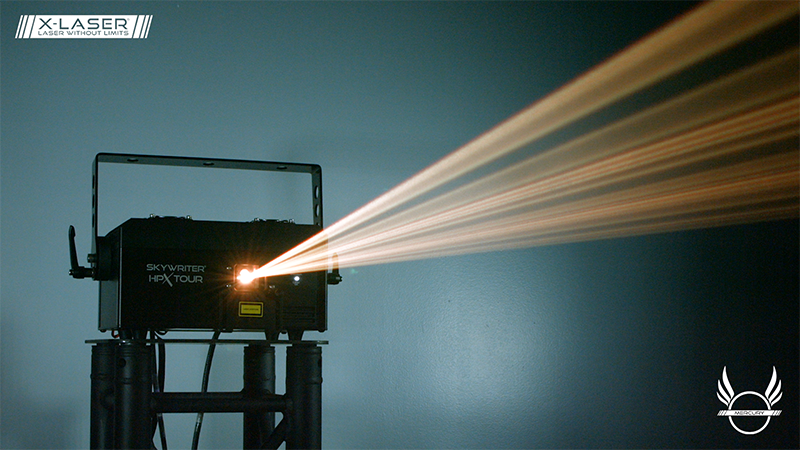
Another very popular laser interface in the industry is Pangolin Laser Systems’ FB4 interface, which is like having a media server type system program the laser. X-Laser understands the personal preference of designers in the industry making the art. Because of that understanding, the company also offers an entire line of F-Series Skywriter products featuring this Pangolin Laser Systems’ FB4 network hardware control platform. Both systems allow you to manage the laser and make looks with your console by sending DMX to the laser, making it popular with many programmers. Ostensibly this is the same as the argument of whose console is better — it comes down to personal preference because the result of all of them is that you can send out DMX and write cues.
The laser market’s major players are who they are because they don’t rest on former laurels; X-Laser and Pangolin are writing the history of the Entertainment Laser industry. You don’t remain a key player by telling your customers how it’s going to be, you make what they want. The control game for laser projectors is not unlike lighting console personal preference — it’s not advantageous to tell your users they can’t use the tool they prefer to program.
Don’t take our word for it — get ahold of Adam Raugh, call up the X-Laser office, get a demo, go see them. You will see a mysterious black box turn into a fully-functioning lighting device that you never knew you could easily incorporate into your rig. They’re making laser fixtures that lighting designers trust and continue to keep using, which as a lighting designer I feel is a feat upon itself.
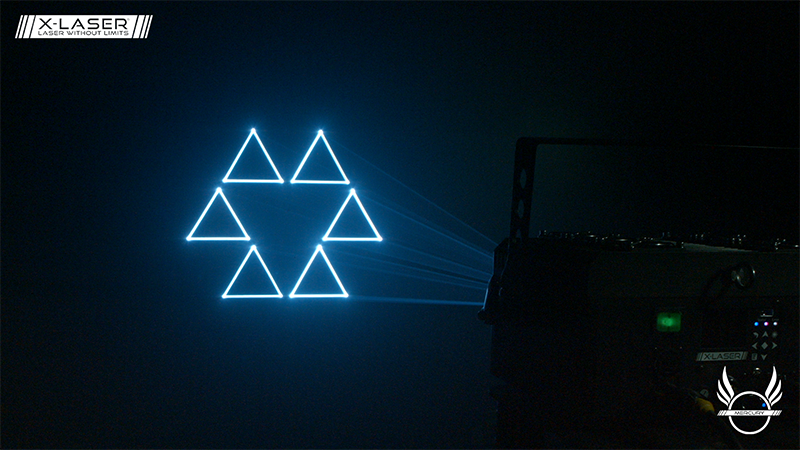
For more information about X-Laser, go to www.x-laser.com.
